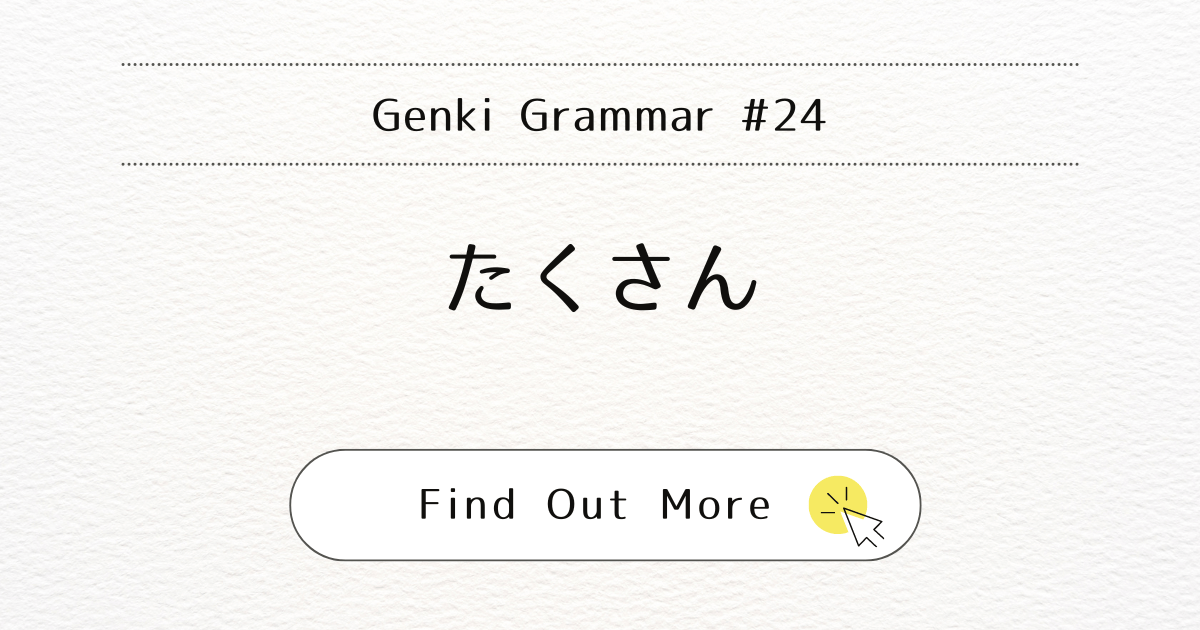
Introduction
Understanding how to express quantity in Japanese can be different from English. One useful word to know is たくさん (takusan), which means “many” or “a lot.”
What it means
“Takusan” (たくさん) is used to describe a large quantity of something.
When you use it
You can use “takusan” in two main ways in a sentence:
- Before the noun.
- After the particle を (o) when the noun is a direct object.
Examples
- 日本でたくさん写真を撮りました。
(Nihon de takusan shashin o torimashita.)
I took many pictures in Japan. - 日本で写真をたくさん撮りました。
(Nihon de shashin o takusan torimashita.)
I took many pictures in Japan.
For sentences with ある (aru) and いる (iru), which mean “there is/are” for non-living things and for people and other living, moving things respectively, you can also use “takusan” in both ways:
- たくさん本があります。
(Takusan hon ga arimasu.)
There are a lot of books.
本がたくさんあります。
(Hon ga takusan arimasu.)
There are a lot of books.
- たくさん人がいます。
(Takusan hito ga imasu.)
There are many people.
人がたくさんいます。
(Hito ga takusan imasu.)
There are many people.
Note
Both orders (Before the noun or After the particle を(o)) are correct and can be used interchangeably without changing the meaning.
Conclusion
Mastering the use of “takusan” is essential for expressing quantity in Japanese. Whether you place it before the noun or after the particle を (o), it effectively conveys the idea of “many” or “a lot.”



